With the increase of signal transmission rate or resolution requirements in the fields of wireless communications, radar, satellite communications, and optical communications, the modulation system used is becoming more and more complex and the signal bandwidth is becoming wider and wider. Modern real-time oscilloscopes have been able to provide up to several tens of GHz of real-time measurement bandwidth due to the advancement of chip and material technology. At the same time, due to the intuitive and multi-channel characteristics of time-domain measurements, they have been widely used in ultra-wideband signals and RF. Signal measurement. This article describes the typical applications of high-bandwidth real-time oscilloscopes in the field of RF signal measurement, and the key indicators such as bottom noise, spurious-free dynamic range, harmonic distortion, absolute amplitude measurement accuracy, and phase noise when the oscilloscope is used for RF measurement. Every engineer who is doing RF or high-speed digital design will face both frequency domain and time domain testing problems. For example, engineers who are engaged in high-speed digital circuit design usually analyze signal waveforms and eye diagrams from the time domain. They also use the S-parameters in the frequency domain to analyze the insertion loss of transmission channels, or use phase noise indicators to analyze clock jitter. For the analysis of wireless communication, radar, and navigation signals, frequency domain tests such as spectrum, spurious, and channel suppression are traditionally required. However, as signal bandwidth is wider and applications such as pulse modulation and frequency hopping are applied, sometimes Time domain measures will be more effective. The performance of modern real-time oscilloscopes has greatly improved over 10 years ago and can meet the test requirements of high-bandwidth, high-precision RF microwave signals. In addition, the triggering and analysis functions of modern real-time oscilloscopes have become more abundant, the operating interface is more friendly, the data transmission rate is higher, and the multi-channel support capability is also better, enabling high-bandwidth real-time oscilloscopes to play in the field of broadband signal testing. The important role. Time domain measurement is intuitive A big reason for the time-domain measurement of RF signals is their intuitiveness. For example, in the example in the right figure, four radar pulse signals of different shapes are shown, and the carrier frequency and pulse width of the signal have little difference. If the analysis is only performed in the frequency domain, it is difficult to infer the time domain shape of the signal. Since the different shapes of the four time-domain pulses are critical to the final convolution processing algorithm and system performance, accurate measurement of the pulse parameters of the signal in the time domain is required to ensure that the system design requirements are met. Higher analysis bandwidth requirements In the traditional RF microwave test, some oscilloscopes with less bandwidth ("1 GHz") are also used to test the time domain parameters, such as using the detector to detect the envelope of the RF signal before performing the parameter test, or After frequency conversion, etc. At this point, because the RF signal has been filtered out, or the signal has been converted to an intermediate frequency, the bandwidth requirement of the oscilloscope to be used for measurement is not high. However, with the development of communication technologies, the modulation bandwidth of signals has become wider and wider. For example, in order to balance power and distance resolution, modern radars use frequency or phase modulation inside the pulse. The typical SAR imaging radar's modulation bandwidth may reach more than 2 GHz. In satellite communications, to avoid miniaturization and increase the transmission rate, C-band and Ku-band are also avoided. With higher Ka-band spectrum efficiency and available bandwidth, the actual usable modulation bandwidth can reach 3 GHz or more. . In addition, the oscilloscope's amplitude-frequency characteristic curve is not flat from the DC to the rated bandwidth, but it begins to drop after reaching a certain frequency. Therefore, when selecting a real-time oscilloscope, the bandwidth of the oscilloscope should be greater than the required analysis bandwidth. Look at the actual frequency response curve of the oscilloscope and the requirements of the measured signal. With such a high transmission bandwidth, traditional detection methods for wave detection or down-conversion may encounter significant challenges. Because it is difficult to find a detector or downconverter with a bandwidth of 2 GHz or more and an ideal amplitude/phase frequency characteristic from the market, serious distortion of the test results will result. At the same time, if you need to demodulate radar pulse or satellite communication signal internal modulation information, you also need very high real-time bandwidth. The traditional spectrum analyzer has high measurement accuracy and frequency range, but the real-time analysis bandwidth is still less than GHz. Therefore, if you want to analyze and demodulate the wideband signal above GHz, the most common method is to use a broadband oscilloscope or a high-speed data acquisition system. Traditional oscilloscopes have low bandwidth and cannot directly capture high-frequency RF signals. Therefore, applications in the field of RF microwaves are limited to testing IF signals or control signals. However, with the development of chips, materials, and packaging technologies, modern real-time oscilloscopes have become increasingly popular. Bandwidth, sampling rate, memory depth, bottom noise, jitter, and other performance indicators all have significant improvements. Material Technology Innovation Improves Oscilloscope Bandwidth Taking material technology as an example, indium phosphide (InP) materials are the most popular materials both internationally and domestically these years. Compared to traditional SiGe materials or GaAs materials, indium phosphide (InP) materials have better electrical properties and can provide higher saturation electron velocity, lower surface recombination velocity, and higher electrical insulation strength. In the process of adopting new materials, a series of process problems also need to be solved. For example, high frequency of InP material The characteristics are very good, but if the conventional aluminum substrate is used, there is a problem of inconsistent thermal expansion coefficient and heat dissipation efficiency. Aluminum nitride (AIN) is a new type of ceramic substrate material. Its thermal performance is closer to that of InP and its heat dissipation characteristics are better. However, AlN materials are expensive and hard and require laser etching. With the help of new materials and new technologies, the hardware bandwidth of modern real-time oscilloscopes can reach more than 60 GHz. At the same time, due to the excellent characteristics of indium phosphide (InP) materials, the oscilloscope's frequency response is flatter and the bottom noise is lower. Lower power consumption brings higher reliability to the product. In addition to providing excellent high-bandwidth performance, the indium phosphide material has a higher reverse breakdown voltage. An oscilloscope designed with indium phosphide material has an input range of up to 8V, equivalent to more than 20dBm, which greatly improves the practicality and reliability. . ADC Sampling Technology Boosts Oscilloscope Sample Rate To ensure high real-time bandwidth, according to Nyqist's law, the sampling rate of the ADC behind the amplifier must be at least 2 times the bandwidth (more than 2.5 times guaranteed in engineering). Currently, there is no such single-chip ADC with such a high sampling rate on the market. Therefore, a high-bandwidth real-time oscilloscope usually adopts the ADC splicing technology. Typical ADC splicing has two methods, one is on-chip splicing, and the other is off-chip splicing. On-chip splicing integrates the cores of multiple ADCs in a single chip. Typically, the 40-bit sampling rate of 10-bit ADC chips used in the Keysight S-Series oscilloscopes, as shown in the figure below, achieves the first 8 GHz bandwidth in the industry. Range of 10bit resolution. The advantage of on-chip splicing is that the consistency and delay control between the various paths can be done very well, but the challenges for integration and process are very large. The so-called off-chip splicing is to do multi-chip ADC chip splicing on the PCB board. A typical example of off-chip splicing is Keysight's Z-Series oscilloscope, which uses 8 ADCs at a sampling rate of 20 G/s to achieve a sampling rate of 160 G/s, guaranteeing up to 63 GHz of hardware bandwidth. Off-chip splicing requires that the consistency between the bias and gain of each chip is very good. At the same time, the time delay of the signal and the sampling clock on the PCB must be precisely controlled. Therefore, the front-end chip of the Z-Series oscilloscope adopts the technique of sampling and holding first, then performing signal distribution and analog-to-digital conversion, which greatly improves the margin for PCB trace error and jitter. It is due to the rapid increase of oscilloscope bandwidth and sampling rate brought by chips, materials and process technology that broadband real-time oscilloscopes play a key role in the testing of RF signals. The following are some typical applications. Time-frequency analysis of radio frequency signals The improvement of the real-time oscilloscope's performance makes it possible to directly cover the RF, microwave and even millimeter wave bands, so that the time domain waveform of the signal carrier can be directly captured and analyzed. The pulse envelope of the signal and the time-domain waveform of the carrier signal inside the pulse envelope can be clearly seen from this, which makes the test of the time domain parameter more concise and intuitive. Since there is no need to downconvert the signal before sampling, the test system is also simpler and avoids additional signal distortion due to unfavorable downconverter performance. Furthermore, it is also possible to use an oscilloscope's time gate function to zoom in or zoom in on a certain area of ​​a radio frequency signal. The figure below shows the time window of two different positions in a radio frequency pulse and the result of FFT transform. The spectrum of the signal in different time windows can be clearly seen. Radar pulse parameter test For pulse-modulated signals such as radar, the width, rise time, duty cycle, and repetition frequency of pulse signals are all very critical time-domain parameters. According to the requirements of the IEEE Std 181 specification, the definition of some major pulse parameters is shown in the following figure. When a broadband oscilloscope has been used to capture RF pulses, a mathematical detector can be edited with the help of the math functions built into the oscilloscope. As shown in the figure below, the black curve is the envelope signal detected by the math detector from the original signal. After the envelope waveform is obtained, some basic pulse parameter tests can be performed with the oscilloscope's own parameter measurement function. Furthermore, we can also use the oscilloscope's FFT function to obtain the signal's spectral distribution, and use the oscilloscope's jitter analysis software to obtain the pulse internal signal frequency or phase change waveform over time, and display these results together. The following figure shows the results of a time-domain waveform, frequency/phase change waveform, and frequency spectrum of a Chirp radar pulse. Through the integrated display and analysis of these waveforms, you can intuitively see the radar signal's changing characteristics and perform simple parameter measurement. . In the test of pulse signals such as radar, it is also very important whether enough continuous pulses can be captured for statistical analysis. If you want to continuously capture thousands or even tens of thousands of radar pulses, you may need very long data recording capabilities. For example, the pulse repetition period of a search radar is 5ms. If you want to capture 1000 consecutive pulses, you need to record the data for 5s. If the sampling rate of the oscilloscope used is 80 G/s, the depth of memory required for recording 5 s = 80 G/s * 50 s = 400 G samples, which is almost impossible to achieve. To solve this problem, the segmented memory mode is supported in modern high bandwidth oscilloscopes. The so-called segmented memory mode (Segmented Memory Mode) refers to the continuous memory space in the oscilloscope is divided into a number of segments, each time the trigger comes only for a short period of time, until the recording of a sufficient number of segments. The width of many radar pulses is very narrow. When you are doing radar transmitter performance testing, if you are interested in only a signal that has been transmitted for a short period of time during pulse transmission, using segmented memory can make more efficient use of the oscilloscope's memory. In the following example, the width of the pulse to be measured is 1us and the repetition period is 5ms. We use the segmented memory mode in the oscilloscope, set the sampling rate to 80G/s, allocate 200k points of memory per segment, and set to make 10,000 segments of continuous recording. The length of time that each segment can be recorded = 200k/80G = 2.5 us, the memory depth of the total used oscilloscope = 200k points * 10000 segments = 2G points, and the realized recording time = 5ms * 10000 = 50 s. In other words, continuous recording of 10,000 radar pulses in continuous 50s is realized by the segmented storage mode. Comprehensive analysis of radar parameters In addition to measuring the basic parameters of the radar pulse directly in the oscilloscope, you can also use the more powerful vector signal analysis software. The figure below is an example of demodulation analysis of ultra-wideband Chirp radar signal using Keysight's 89601B vector signal analysis software combined with an oscilloscope. The figure shows the spectrum of the signal under test, the time domain power envelope, and the frequency curve over time. . The signal to be measured is generated by the M8195A ultra-wideband arbitrary wave generator. The pulse width of the Chirp signal is 2us, and the frequency varies from 1GHz to 19GHz. The entire signal bandwidth is as high as 18GHz! This fully demonstrates the advantages of real-time oscilloscope bandwidth. A more rigorous radar test will not only measure basic parameters such as pulse and modulation bandwidth. For example, due to the device's bandwidth is not enough or the frequency response characteristics are not ideal, it may cause the power of various frequency components within the Chirp pulse to change, thus forming a drop (Droop) and ripple (Ripple) phenomenon in the pulse power envelope. Therefore, strict radar performance test also needs to measure the peak power, average power, peak-to-average ratio, Droop, Ripple, frequency change range, linearity and other parameters of pulse, frequency and phase change between multiple pulses, or Analyze the curve and histogram distribution of the parameters over time. These more complex tests can be implemented with the BHQ radar pulse measurement option in the 89601B software. This test software also supports the oscilloscope's segmented memory mode, which allows you to capture multiple consecutive pulses at a time before doing statistical analysis. The following figure is an example of an actual test. Frequency hopping signal test In addition to radar pulse analysis, ultra-wideband FM signals can also be analyzed using the oscilloscope's own jitter analysis software or vector signal analysis software. The following figure shows the analysis of the spectrum, time domain, and frequency modulation pattern of a signal that is frequency-modulated over a bandwidth of 7 GHz. Modulator delay test In satellite communication or navigation, etc., it is necessary to test and correct the absolute delay of its RF output (possibly RF or Ku/Ka band signal) relative to the internal timing signal (1 pps or 100 pps signal). This requires the use of a broadband oscilloscope with at least 2 channels to capture both the timing signal and the RF output, and to perform accurate and repeatable measurements. The following figure shows the 1pps timing signal (blue waveform) captured by the oscilloscope and the QPSK modulated RF output signal (purple waveform). After the arrival of the timing signal used as the trigger, the time delay of the first zero-crossing point of the RF signal power with respect to the timing signal is the system delay to be measured. If only the manual cursor measurement is performed, it is difficult to obtain the correct power zero position. We can use the digital detection function introduced above to detect the power envelope of the RF signal and perform amplification (as shown by the gray waveform). With the help of the oscilloscope's measurement function, we can measure the moment (Tmin) of the minimum power envelope. This achieves accurate testing of satellite transponder or modulator delays. Through multiple automatic zero-crossing tests, it is also possible to perform long-term statistics to analyze the range of delay and jitter. Broadband communication signal demodulation analysis In the field of WLAN, satellite communications, and optical communications, it may be necessary to perform performance testing and demodulation analysis on very high-bandwidth signals (“500 MHzâ€), which is very demanding on the bandwidth and number of channels of measurement instruments. For example, in a fiber backbone transmission network, a single-wavelength 100 Gbps signal transmission has been implemented. The technology adopted is to modulate two 25 Gbps signals to one polarization state of the laser by a QPSK modulation method, and then pass the other two 25 Gbps signals through The same way to modulate the laser to a polarization state, then combine the signals of the two polarization states to achieve 100 Gbps signal transmission. In the next-generation 200 Gbps or 400 Gbps technology development, higher baud rates and higher-order modulation technologies such as 16QAM, 64QAM, and even OFDM may be adopted, all of which place very high demands on the bandwidth and performance of measurement instruments. The request. The following figure shows the N4391A 100G/400G Optical Coherent Communication Analyzer from Keysight Corporation: The lower part of the instrument is a coherent optical communication demodulator for a total of 4 I/Q signals in the 2 polarization states of the input signal. Disassembled and converted into electrical signal output, the baud rate of the highest supported signal per channel can reach 126 Gbaud; while the upper part is a high-bandwidth Z series oscilloscope, a single oscilloscope can realize 4 channels of 33 GHz measurement bandwidth or 2 63 GHz measurement bandwidth; oscilloscope running 89601B vector signal analysis software, you can complete the signal polarization alignment, dispersion compensation and 4 I / Q signal demodulation and simultaneous display. The figure below also shows the result of an ultra-wideband signal demodulation analysis using an oscilloscope. The signal under test is a 16Gbit modulated signal of 32Gbaud sent from the M8195A. Since 16 symbols can transmit 4 bits of valid data per symbol in the 16 QAM modulation format, the actual data transmission rate reaches 128 Gbps. Through wideband frequency response correction and predistortion compensation, a signal-to-noise ratio of up to 20dB and a 4% EVM (Vector Modulation Error) indicator are achieved. Multi-channel measurement In the case of MIMO (MulTIple-input and MulTiple-output), phased array, and scientific research, it is usually necessary to make simultaneous measurements of more than 4 high-speed signals. To meet this application, modern high-bandwidth oscilloscopes provide support for multi-channel measurements both in hardware and software. Keysight's N8834A multichannel oscilloscope software supports the Infiniium 9000, 90000, S, V, Z Series multichannel oscilloscope solutions. The figure below shows the multi-channel cascaded solution based on Z-Series oscilloscopes and the multi-channel measurement software in the oscilloscope. It can now support the cascade of up to 10 oscilloscopes, providing 20 simultaneous measurement channels with bandwidth up to 63 GHz, or 40 The road bandwidth is a 33 GHz measurement channel. With accurate time delay and jitter calibration, the jitter between channels can be controlled within 150fs (rms). EMI/EMC Pre-Debug Function In addition to complying with EMC regulations for many RF products, the EMI phenomenon also affects the performance of the product, especially in terms of noise and jitter. If carelessly handled, it may damage the function of the entire circuit, so many circuit design guidelines will include the protection band, Refer to Ground Plane, Loop, Power Control Loopback, and Spread Spectrum Clocks for the purpose of minimizing EMI effects. Common causes of EMI problems include switching power supplies, power supply filtering, ground impedance, LCD screens, metal shielding shell statics, poor cable shielding, internal coupling of routing paths, device parasitics, and incomplete signal paths. A common analysis method for EMI problems is to use a spectrum analyzer receiver. However, many engineers may be unfamiliar with the fact that oscilloscopes can be used for EMI pre-commissioning. One of the concerns previously was that most oscilloscopes use 8-bit ADCs. The amplitude and phase responses are not very good, and they are like Infiniium S-series oscilloscopes. Using a 10-bit ADC in the 500 MHz to 8 GHz bandwidth, the V series reduces the noise floor to a low level in the 8 GHz to 33 GHz bandwidth. The oscilloscope adds many functions in EMI pre-commissioning, including frequency domain masks, near-field probes, and more. Up to 8 simultaneous FFT analysis, drawing (arbitrary position) triggering, simultaneous analysis of analog, logic, and serial signals. The following figure is an example of near field probes and frequency domain mask triggering that can be used for EMI pre-commissioning. From the typical application of some oscilloscopes introduced in RF testing, we can see that due to the development of technology, the advantages of high-bandwidth, multi-channel oscilloscope are very suitable for a variety of complex ultra-wideband applications, while its time domain, frequency domain Comprehensive analysis capabilities also improve the intuitiveness of the measurement. However, when using an oscilloscope to test RF signals, we cannot but have some concerns about its accuracy and performance. Although the real-time oscilloscope has a high sampling rate, the 8bit ADC is commonly used, so its quantization error and bottom noise are large. In addition, traditional oscilloscopes only provide their bandwidth, sampling rate, memory depth, and other indicators, and there are fewer performance indicators available in the frequency domain for reference. Therefore, in the following we will use some practical tests and analysis to understand the oscilloscope's RF performance indicators. Noise Floor Bottom noise is a very important indicator of the measurement instrument, it will affect the signal-to-noise ratio of the measurement results and the ability to measure small signals. Traditionally, the bottom noise of the oscilloscope is considered to be high, so it is not suitable for small signal measurement. This is not exactly the case. The main reason is that different instruments have different definitions of bottom noise. The main sources of noise at the bottom are thermal noise and the noise added by the front-end amplifiers, which are usually approximately proportional to the bandwidth. For example, the thermal noise is calculated as follows. The noise power and the bandwidth are linear. The oscilloscope is a wideband measurement instrument whose bottom noise index gives the sum of the noise over the full bandwidth and is also approximately proportional to the bandwidth. For example, on the left side of the figure below is the bottom noise figure given in the Keysight S-Series oscilloscope manual. In the 50mv/div range, the bottom noise of the 4 GHz bandwidth oscilloscope S-404 is 768uVrms, which is approximately 2 times the bottom noise 456uVrms of the oscilloscope S-104 with a 1GHz bandwidth. Since the power is the square of the voltage, the power of the bottom noise of the 4GHz oscilloscope is 4 times the noise power of the 1GHz oscilloscope under the same conditions, which is exactly equal to the multiple of the bandwidth. Because the bottom noise is approximately proportional to the bandwidth, the bottom noise of a broadband oscilloscope will be larger than that of a narrowband. In order to be fair, we can normalize the bottom noise of the oscilloscope at different ranges to every unit of Hz. This is exactly how to describe the display average noise level (DANL) in RF instruments such as spectrum analyzers. For example, at a range of 50mv per cell, the full scale of the oscilloscope is 8 cells equivalent to 400mV, which corresponds to a full scale of -4dBm. For an 8GHz S-804A oscilloscope, the total bottom noise in the 8GHz bandwidth is 1.4. mVrms, which is equivalent to -44 dBm, is equivalent to -143dBm/Hz as the bottom noise per unit Hz. With a smaller range, the S-Series oscilloscope's bottom noise can reach -158dBm/Hz, which is better than most of the market's spectrum analyzers do not turn on the preamplifier. Even with the preamplifier turned on, the DANL of many analyzers is only a few dB better than the S-Series oscilloscope. The following figure shows the measured noise floor of an S-Series 8GHz bandwidth oscilloscope at the minimum range. The center frequency is 1 GHz and Span is 20 MHz. In addition to having a small spur at the 1 GHz frequency, the bottom noise at RBW=10 KHz is about -120 dBm, which corresponds to about -160 dBm/Hz. Therefore, after normalization to each unit of Hz, the oscilloscope's noise floor has been better than most of the spectrum analyzer's indicators without opening the preamplifier. This indicator is still quite good. Since the noise is proportional to the bandwidth, if the signal bandwidth is only concentrated in a certain frequency range, it is possible to filter unnecessary out-of-band noise by corresponding digital filtering techniques to improve the signal-to-noise ratio, such as in many oscilloscopes. bandwidth adjustment function is digital oscilloscope itself for reducing background noise method. Spurious-free dynamic range (SFDR) In radio frequency tests, in addition to the bottom noise, the spurious-free dynamic range (SFDR) is also very important because it determines the minimum signal energy that can be resolved in the presence of large signals. For oscilloscopes, the main source of spurs is due to unsatisfactory ADC splices. Taking two ADCs as an example, if the phase of the sampling clock is not accurately controlled by 180 degrees, signal distortion may occur, and a spurious signal with a period of splicing frequency will appear on the frequency spectrum. If the distortion is severe, even a high sampling rate cannot guarantee the authenticity of the collected signal. For high-bandwidth oscilloscopes, whether on-chip or off-chip splicing, due to the spurious caused by the splicing is not ideal, the key is the size of the spurious energy. Taking Keysight's S-Series oscilloscopes as an example, a single-chip 40 G/s ADC chip is used, and clock distribution and sample-and-hold circuits are optimized through a dedicated process, which ensures good consistency. The following figure shows the frequency spectrum of the 1GHz signal generated by Keysight’s E8267D signal source after filtering out harmonics in the Span range of 5GHz. It can be seen that in addition to the second and third harmonic distortion, the spurious index can be achieved. -75dBc, equivalent to the level of a mid-range spectrum analyzer. Harmonic Distortion (Harmonic DistorTIon) Harmonic distortion is also an important measure of the fidelity of the measurement signal. For the oscilloscope, in order to ensure a high sampling rate, the number of bits (8 bits or 10 bits) of the ADC is quite different from that of the 14-bit ADC used in the spectrum analyzer. The harmonic distortion is mainly caused by the quantization noise of the ADC. Signal distortion, typically 2nd and 3rd harmonic distortion, is usually higher for the 3rd harmonic, which is not the same as the source of the 2nd harmonic distortion caused by the mixer in the spectrum analyzer. In the above test results, its 2nd harmonic distortion is about -65 dBc, which is worse than the general spectrum analyzer. Its 3rd harmonic distortion is about -49dBc, which is far worse than the general spectrum analyzer. Therefore, if users are concerned about harmonic distortion indicators, such as in the nonlinear test of amplifiers, using an oscilloscope is not a good choice. Fortunately, distortion caused by harmonics is usually out of band, and harmonics are easily filtered out by simple mathematical filtering. Therefore, in some broadband signal demodulation applications, because the measurement algorithm will add a mathematical filter during the demodulation process, the harmonic distortion has little effect on the final demodulation result. Absolute amplitude accuracy Absolute amplitude accuracy affects the accuracy of the oscilloscope's power measurement on a frequency carrier. For the oscilloscope, the absolute amplitude accuracy index = DC amplitude measurement accuracy + amplitude-frequency response. Therefore, two parts need to be analyzed separately. The DC amplitude measurement accuracy is the nominal double-cursor measurement accuracy in the oscilloscope, and it is also composed of DC gain error and vertical resolution (as shown in the following figure, the DC measurement accuracy of the Keysight S series oscilloscope). For real-time oscilloscopes, the DC gain accuracy is typically 2% of full scale, and the resolution is related to the number of bits used in the ADC. If it is a 10bit ADC, it is equivalent to 1/1024 full scale. From this calculation, the DC amplitude accuracy of the real-time oscilloscope is approximately ±0.2 dB. As for the amplitude-frequency response, the amplitude-frequency response of traditional broadband devices will not be particularly good, but modern high-performance oscilloscopes will be calibrated and compensated for frequency response at the time of shipment, making its amplitude-frequency response curve very flat. The following figure shows the amplitude-frequency response curve of an 8 GHz bandwidth S-Series oscilloscope from Keysight. It can be seen that the in-band flatness is very good, and the fluctuation within 7.5GHz does not exceed ±0.5dB. Therefore, in summary, the absolute amplitude measurement accuracy of the S series oscilloscope within 7.5 GHz can be controlled to about ±1 dB, which is equivalent to the index of most high-end spectrum analyzers. And Keysight's V-Series oscilloscopes can guarantee ±0.5dB absolute amplitude accuracy in the range of 30GHz, which exceeds the specifications of most high-end spectrum analyzers. Phase Noise The phase noise of the measurement instrument reflects the magnitude of the near-end low-frequency noise when testing a pure sine wave. In radar and other applications, it will affect the resolving power of multi-rate frequency shift for slow target recognition. The frequency domain integral of phase noise is the jitter in the time domain. For oscilloscopes, poor phase noise or too much jitter can cause additional noise when sampling the RF signal and degrade the effective number of bits. Traditional oscilloscopes do not care much about the jitter or phase noise of the sampling clock, but with the increasing sampling rate of the oscilloscope, and in order to improve the performance of the RF test, modern digital oscilloscopes such as Keysight's S, V, and Z series oscilloscopes All the clock circuits were optimized, and even the classical microwave signal source such as the clock circuit design in the E8267D was used, making the oscilloscope's phase noise index greatly improved. The following figure shows the phase noise curve of S oscilloscope at 1GHz carrier. The RBW setting in the test is 750 Hz. The noise energy at 100 kHz from the center carrier is approximately -92 dBm, and the energy normalized to unit Hz is approximately -120 dBc. /Hz, this has exceeded the phase noise indicator of most mid-range spectrum analyzers on the market. The phase noise performance of the higher performance V series oscilloscopes can achieve about -130dBc/Hz@100KHz offset, which exceeds the corresponding indicators of most mid to high-end spectrum analyzers on the market. From the previous introduction, it can be seen that modern high-performance real-time oscilloscopes have a significantly lower harmonic distortion index than the number of ADC bits, and their spurious-free dynamic range is comparable to a mid-range spectrum analyzer. , In-band flatness, absolute amplitude accuracy, phase noise and other indicators can already be similar to high-end spectrum analyzers. Moreover, in order to meet the requirements of RF testing, modern high-performance oscilloscopes, in addition to the traditional time domain indicators, also began to mark the injection frequency indicators to suit the RF users' habits. The following table shows the typical RF specifications given in the Keysight V-Series oscilloscopes. Of course, due to different operating principles, real-time oscilloscopes have some limitations when doing frequency domain analysis. For example, under a very small RBW setting (1KHz), the waveform update rate will change significantly due to the need to collect large amounts of data for FFT calculations. Slow, so it does not apply to the measurement of narrowband signals. It is the real-time oscilloscope's obvious high bandwidth, multi-channel advantages, and powerful time-domain measurement capabilities, coupled with improved RF performance indicators, making it possible to measure ultra-wideband RF signals, analyze time-frequency domains, and perform multi-channel measurements. The field began to play an increasingly important role.
Printer Cable,USB Printer Cable,USB 2.0 Cable,Type A Male to B Male Cord,USB B Cable for HP UCOAX , https://www.jsucoax.com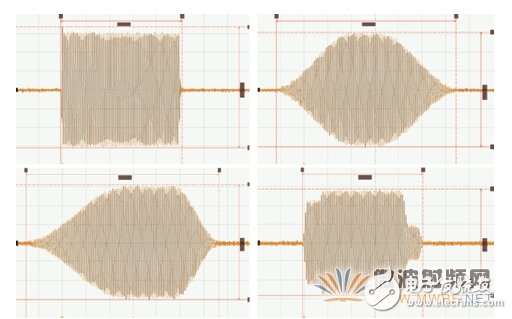
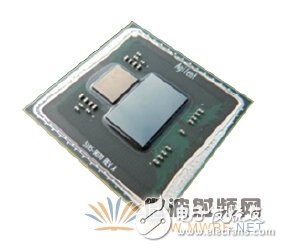
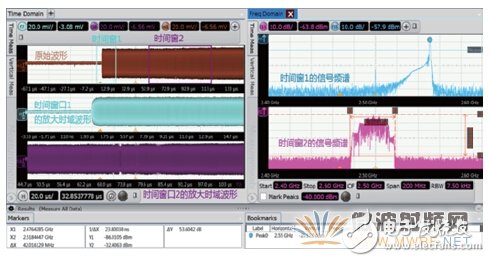
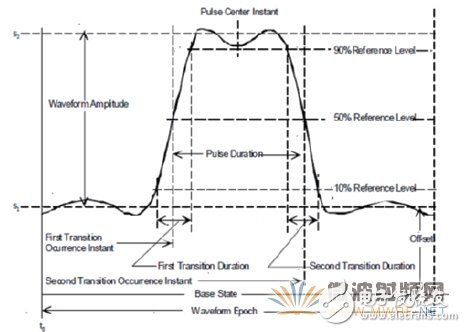
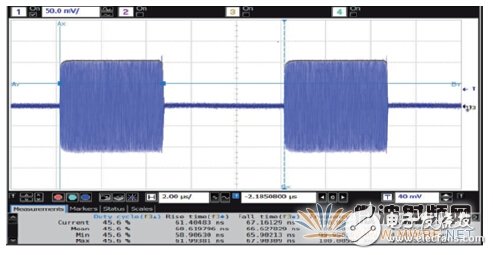
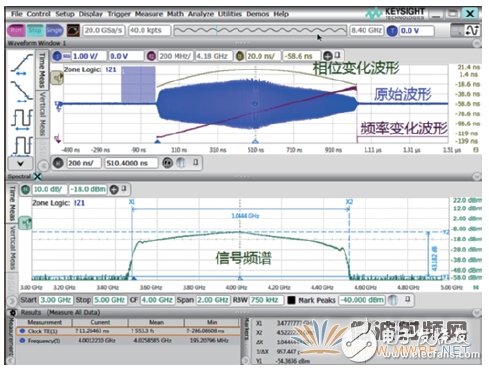
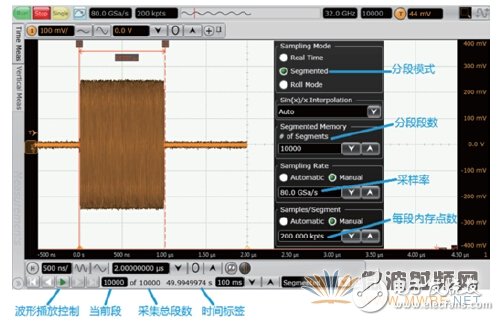

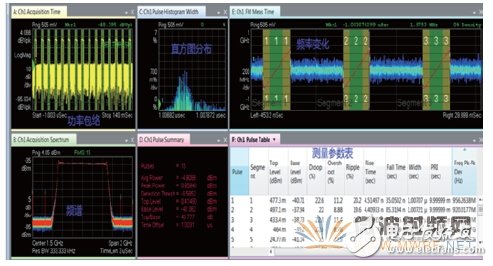
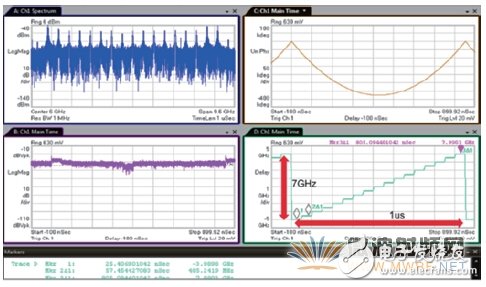
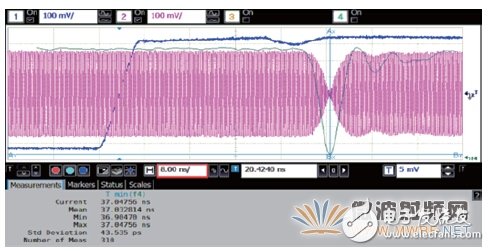
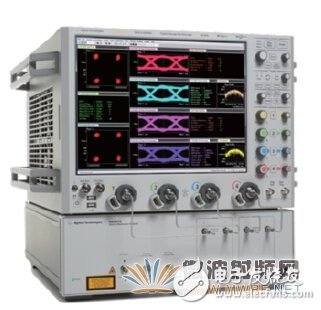




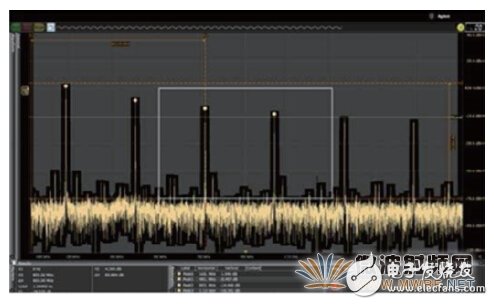
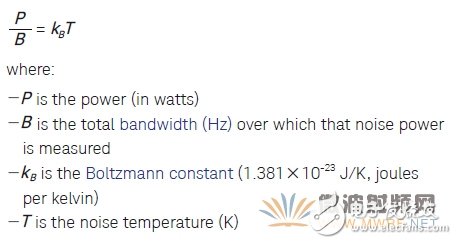
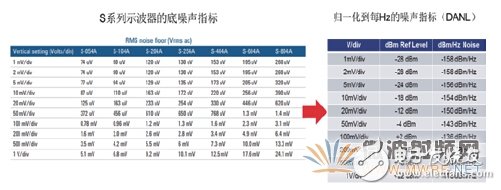
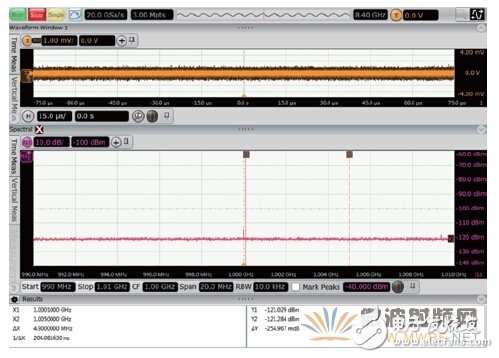
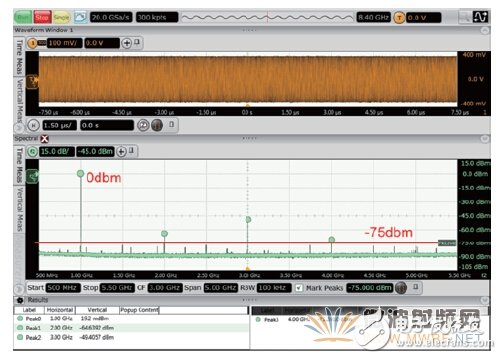

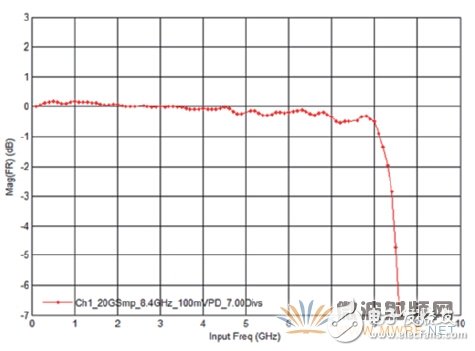
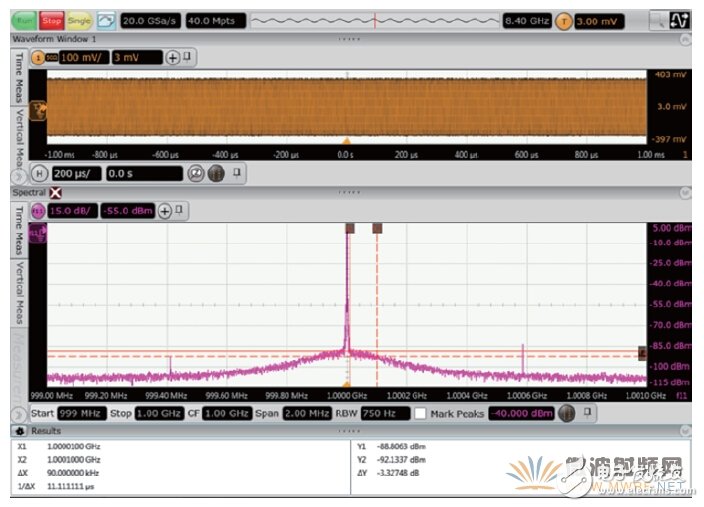
USB Printer Cable USB Printer Cord USB 2.0 Type A Male to B Male Scanner Cord High Speed for HP, Canon, Dell, Epson, Lexmark, Xerox and More
USB C Printer Cable USB B to USB C Cable Nylon Braided, 2.0 High-Speed Printer Cord for MacBook Pro/Air, USB C MIDI Cable Compatible for Casio Digital Piano MIDI Controller
Printer cord connects USB-C enabled devices (MacBook Pro, Surface Book 2, Chromebook Pixel. etc) to USB 2.0 Type B devices and peripherals, USB 2.0 B male is Target side, compatible with USB Type B port(Legacy Printers, Multifunction, Laser or Thermal Printer, Desktop Document Scanner, Yamaha Casio Digital Piano, MIDI-Controller, Electric Keyboard, etc.)
USB2.0 High-Speed 480Mbps Transfer: This printer USB B to USB C cable supports High-Speed data transfer/syncing up to 480 Mbps, and is backward compatible with Full Speed USB 1.1 (12 Mbps) and Low-Speed USB 1.0 (1.5 Mbps) standard devices, providing more stable, faster and more secure data transfer than a WIFI connection, improving your work efficiency.
Gold Plated Plug, Stable & Clear Printing: The printer usb c cable is constructed with anti-oxidation high purity copper wire with an increased number of cores and shields and the interface of this USB b to USB c cable uses100% contact gold plating process technology, providing better transmission performance against EMI/RFI noise, enjoy stable and clear printing results. Plug and play, don`t need to install any plugins and check the cable orientation, convenient and fast.
SR Design &10X Durable Cable: UCOAX USB C to USB B printer cable features abrasion-resistant double-braided nylon fiber jacket and aluminum alloy casing to increase corrosion-resistant, passed the printer cable 40,000+ times bend test, making the cable more durable, and sturdier for a longer lifespan, ensuring that customers can achieve the purpose of "NEVER CHANGE THE CABLE"
Wide Compatibility: The USB Type C port Male is Host side, compatible with Dell XPS 13/XPS 15, MacBook Pro, MacBook Air, iMac 2017, iMac ProChromebook Pixel, DELL XPS, HP Spectre, ThinkPad T570, YOGA 900, HUAWEI MateBook and so on. USB B 2.0 port can be compatible with HP Deskjet 2540 / 3630, HP Officejet 5740, HP Envy 4527 / 4520 / 4523 / 5540, Canon MG5750 / MG3550 / MG7550, Epson XP225 / XP245 / XP425, Brother DCP-L2520DW, Lexmark MX310DN, Dell C2665DNF, Samsung Xpress SL-C1860FW, etc.
PROFESSIONAL SUPPORT: UCOAX is a brand that focuses on usb cable. We provide valid technical support for 2 years.